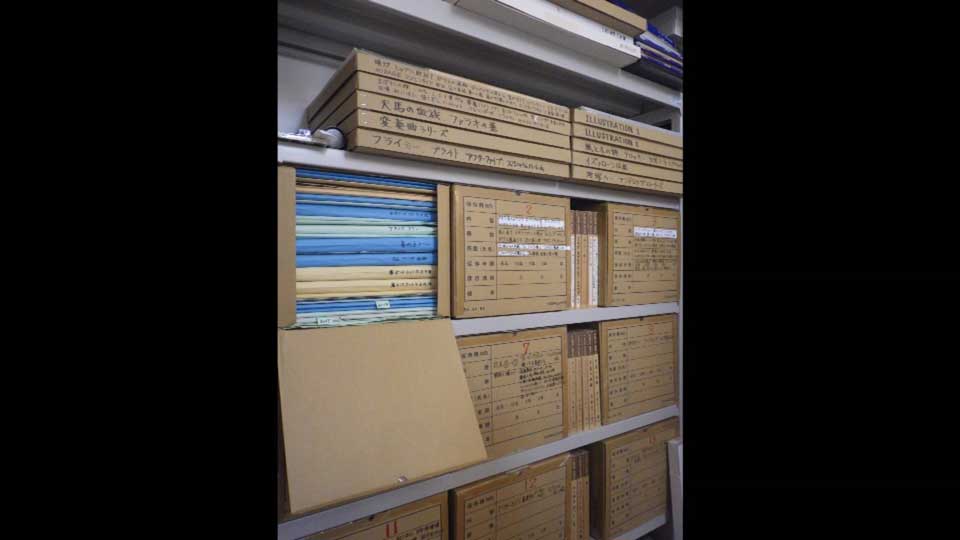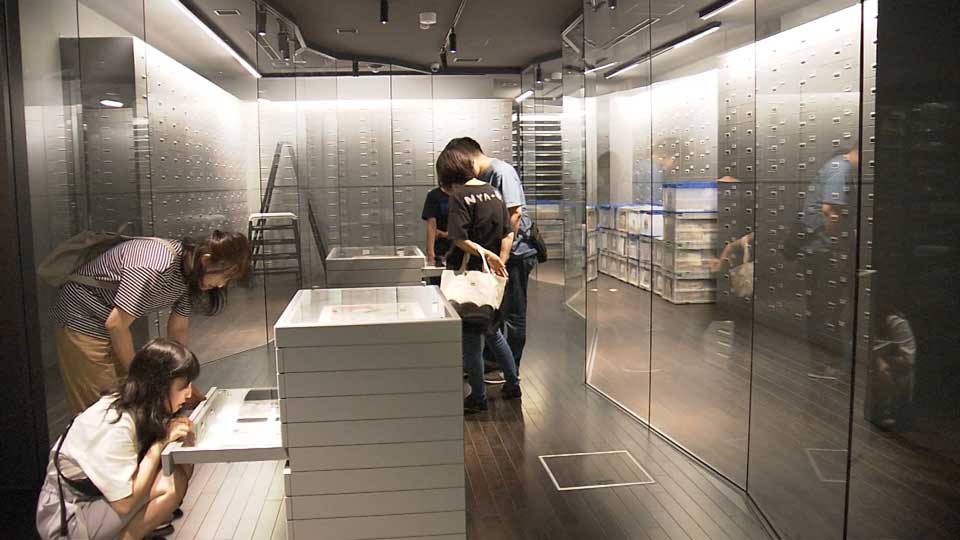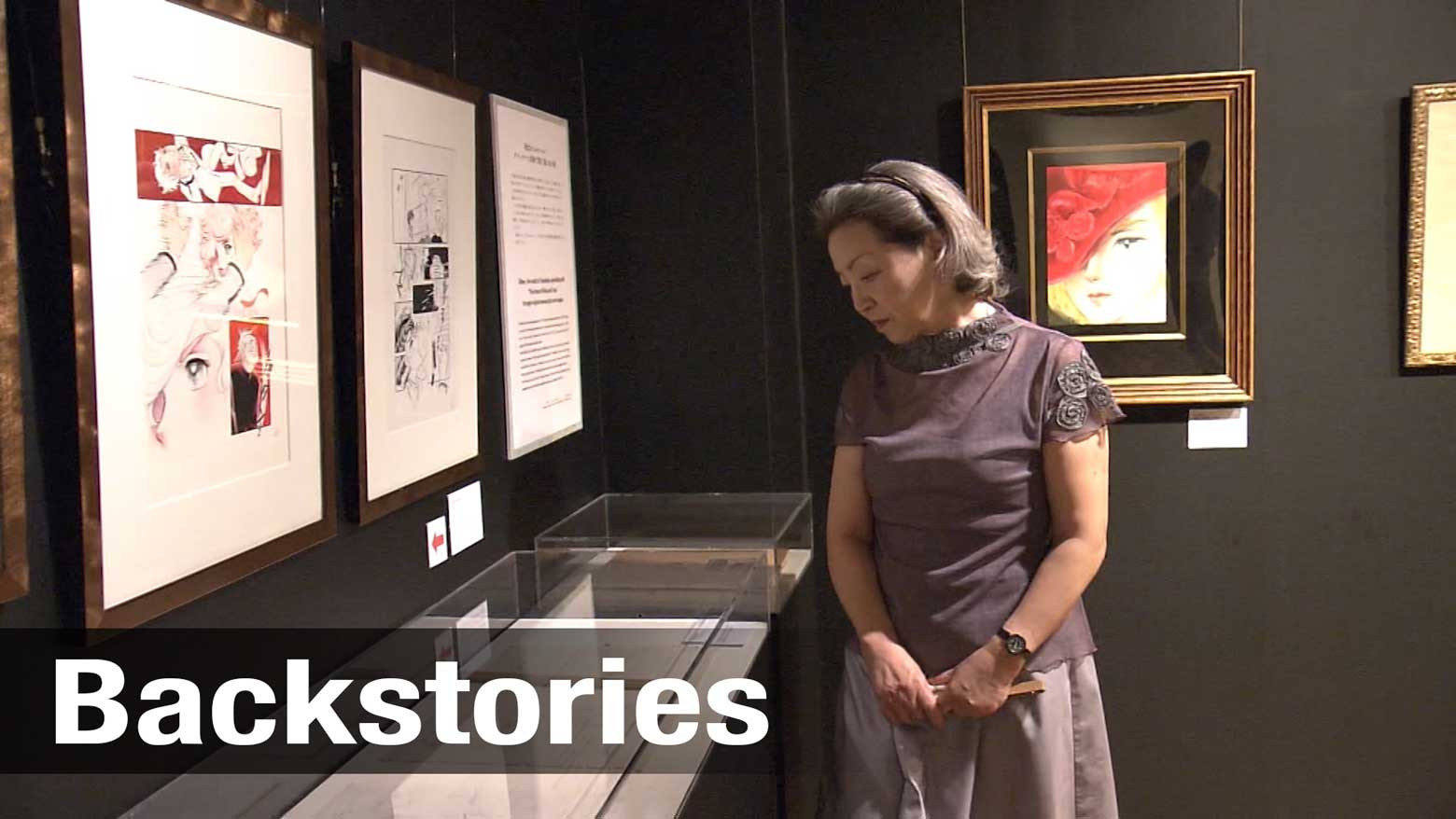Astro-nomic prices at auction
An auction in Paris last year made headlines in Japan. A European collector bought an original sheet from "Astro Boy" by Osamu Tezuka for about $320,000.

It's only recently that people have come to see original manga drawings as objects of value. Traditionally, publishers sent the drawings back to their creators after printing and left it up to the cartoonists to decide what to do with them. There was no custom of preserving the drawings. Experts say when cartoonists die, relatives often throw the drawings away.
Artists fear for their artwork
"Japan doesn't have any proper system to protect original drawings," says cartoonist Keiko Takemiya, who has penned several celebrated series, including "Kaze to Ki no Uta" and "Toward the Terra."

Takemiya keeps all of her drawings. She says they're important because they show the delicate touches of her pen. Fans in Kyoto had the chance to see those touches close up when her work went on show at the Kyoto International Manga Museum to mark her 50th anniversary as an artist.
Takemiya will turn 70 next year and inevitably her thoughts turn to the future of her drawings.
"I don't know if I can leave my drawings with someone or someone will be happy to have them when I can no longer keep them," she says. "Maybe we should let them go abroad, to people who know their true value, like what happened with ukiyo-e."

Ukiyo-e woodblock printing flourished as an art form in the Edo period, but by the late 19th century, tastes had changed and more modern forms of art became more popular. In Japan, Ukiyo-e was seen as an outdated format of little value.
Abroad, however, it was a different story. Collectors were snapping up the prints at rock-bottom prices, and many famous western artists cited ukiyo-e as an inspiration.
Ukiyo-e fans abroad saw value in the works and took the trouble to preserve them. It's thanks to them that we can appreciate the masterpieces today. But is that the best path for preserving manga?
Akita museum leads the way

The Yokote Masuda Manga Museum stands in a rural part of Akita Prefecture in the far north of Japan. It opened in 1995 as the first museum in the country dedicated to manga. In May, it transformed into a facility that doubled as a custodian for original drawings.
Looking after them takes some serious work. Manga artists rarely drew on high-quality paper, so the sheets must be stored in temperature- and humidity-controlled environments to prevent them deteriorating. In the museum, each book gets its own drawer and is stored with anti-oxidative paper between each page. Staff members in the Archive Room maintain a database with details of the condition of each page, such as yellowing or tape marks. The storage rooms and Archive Room have glass walls so visitors can watch the curators at work.

The museum also digitally keeps high-resolution scans of the drawings. In one section, visitors can enlarge the images on a touch screen to view the intricate brushwork or read cartoonists' instructions to their assistants.
Manga artists have entrusted the museum with 230,000 sheets of original drawings. Museum officials say they have room for about 700,000 pieces in total.
That's just a tiny fraction of the estimated 50 to 60 million drawings that have been produced in the country.
Takashi Oishi, who was in charge of the museum revamp, has been teaching staff in other museums about preserving manga. His ultimate goal is to build a nationwide network to protect the art.

Original drawings going missing
In London this year, the British Museum endorsed the art form by staging what was billed as the largest ever manga exhibition outside Japan. It featured works from about 50 Japanese artists.
As the popularity of manga abroad grows, its value is being rediscovered by people in Japan. Exhibitions of original drawings by popular artists are taking place across the country.
And the rising value has created a new issue. Pages from hit manga could be subject to inheritance tax.
Eiji Otsuka, an accountant specializing in inheritance tax, says original drawings could be regarded as art pieces and thus taxable if they are traded at auctions. Some artists are now selling their works or even throwing them away because they don't want to cause tax problems for their family after they pass away.
In Japan, original drawings are usually traded online, making it difficult to account for their whereabouts once they are sold. The baby boomer artists who spearheaded Japan's manga industry are now reaching old age, and there's a fear that their original drawings could be lost forever. So the pressure in on to find a way to preserve the work before it goes down the same path as ukiyo-e.

